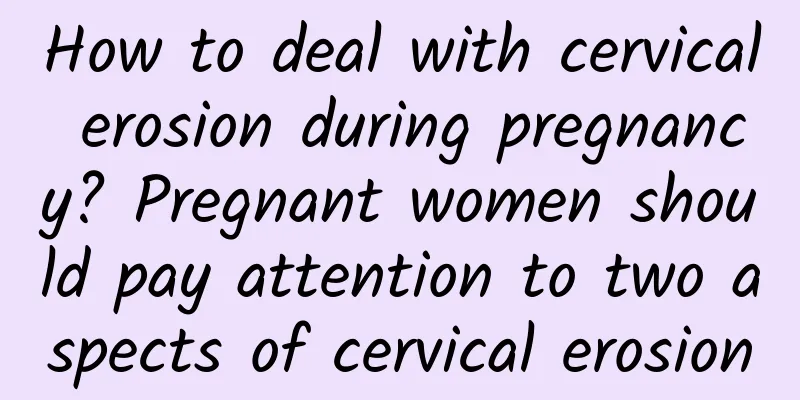What causes right lateral adnexitis?

|
Right-sided adnexitis is usually caused by a bacterial infection, which can occur with pelvic inflammatory disease, sexually transmitted diseases, or post-operative infection. Treatments include antibiotic therapy, physical therapy, and surgical intervention. 1. Genetic factors Although adnexitis itself is not a hereditary disease, certain genetic factors may increase the risk of infection. For example, individuals with a weaker immune system are more susceptible to bacterial invasion, leading to inflammation. People with a family history of pelvic inflammatory disease or adnexitis should pay more attention to personal hygiene and regular physical examinations. 2. Environmental factors Unclean sex, use of unhygienic sanitary products or prolonged exposure to a humid environment may increase the risk of infection. Sexually transmitted diseases such as gonorrhea or chlamydia are common causes. It is recommended to maintain personal hygiene, avoid unclean sex, use clean sanitary products, and keep the private parts dry. 3. Physiological factors During menstruation, after childbirth or after miscarriage, women's body resistance decreases and they are more susceptible to infection. Long-term stress and irregular work and rest may also lead to decreased immunity and increase the risk of inflammation. Maintaining good living habits, exercising properly, and enhancing immunity are important measures to prevent adnexitis. 4. Trauma Pelvic surgery, abortion surgery, or intrauterine contraceptive device placement may cause infection and lead to adnexitis. Improper postoperative care or incomplete disinfection of instruments are common causes. Postoperative care should be strictly followed according to the doctor's instructions to avoid infection. 5. Pathological factors Pelvic inflammatory disease, endometriosis or other gynecological diseases may spread to the adnex and cause inflammation. Chronic inflammation may worsen if not treated in time. Regular gynecological examinations and timely detection and treatment of related diseases are the key to preventing adnexitis. Treatments include: 1. Antibiotic treatment: Commonly used drugs such as cephalosporins, metronidazole, etc., need to choose appropriate antibiotics based on the results of bacterial culture. 2. Physical therapy: such as hot compress, infrared irradiation, etc., can relieve pain and promote the absorption of inflammation. 3. Surgical treatment: For severe cases, such as abscess formation or ineffective drug treatment, laparoscopic surgery or open surgery may be required. The prevention and treatment of right adnexitis need to start from many aspects, including improving living habits, paying attention to personal hygiene, and timely treatment of related diseases. If symptoms such as lower abdominal pain, fever or abnormal secretions occur, you should seek medical attention in time to avoid worsening of the condition. Through scientific treatment and prevention measures, adnexitis can be effectively controlled to protect women's health. |
<<: Does left lateral adnexitis affect pregnancy?
>>: How to treat cervicitis cells
Recommend
What medicine is usually used for endometrial tuberculosis
Endometrial tuberculosis is a gynecological disea...
Causes and treatments for amenorrhea
Causes and treatments for amenorrhea: There are m...
Department of Health inspection: 5 meatballs contain banned drug chloramphenicol
The meatballs that Chinese people love to eat wer...
Do you know what treatments are available for cervical hypertrophy?
Everyone has heard of cervical hypertrophy. But h...
Lose weight this way! 5 exercises to effectively train muscle strength
When doing strength training, I want you to think...
Jump rope to lose weight! Master 4 tips to burn fat for 6 hours
When I was a kid, skipping rope was a compulsory ...
Reverse fatty liver disease! Nutritionist: Avoid white rice and the "three whites"
One out of every 2 to 3 people in the country suf...
What are the causes of adnexitis?
The occurrence of adnexitis is usually caused by ...
Will uterine fibroids recur after surgery? How to perform interventional treatment after uterine fibroids surgery
When many female friends find out that they have ...
Experts explain what adnexitis is
Adnexitis is very common in our country, and we s...
What is vaginal candidiasis
What is candidal vaginitis? Vaginal candidiasis i...
What are the treatments for vulvar leukoplakia?
Qiandan: What are the treatments for vulvar leuko...
What causes adenomyosis?
The development of adenomyosis and adenomyomas is...
What are the prevention methods of ectopic pregnancy
Nowadays, there are more and more patients with e...
How to treat pelvic inflammatory disease
How is pelvic inflammatory disease treated? Pelvi...









